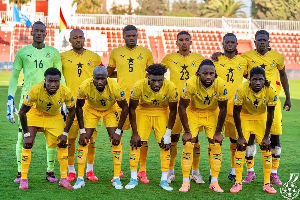The World Architecture Day celebrates architecture, its potential, and socially conscious architects who help to transform the lives of millions across the globe by providing quality architectural housing needs.
Architecture in Ghana has over the years evolved from our traditional designs to the ancient European housing styles and recently, to the ultra-modern building designs.
Old traditional designs
The Asante traditional buildings from the late 18th century to the early part of the 20th century had unique architectural designs that caught the eyes of Europeans.
The buildings were usually shrines for traditional deities, and some were palaces for the local chiefs. Their buildings had designs with symbolic meanings. Most of these buildings were lost in war during the 19th century.

Ancient slave markets and relics in the Northern parts of the country also had traditional architectural designs. Below is the reception area of the Pikworo slave camp which was built with mud, wood and dried palm leaves.

Traditional buildings were designed to cater for large extended families as the nuclear family system was not popular at the time. The houses may look small, but they were very spacious and had a cool room temperature.
Some of the traditional houses are still present in remote villages, especially in the Central and Volta Region.
Foreign influencers in Ghana’s architectural history
Europe has majorly influenced the country’s architectural designs during the era of colonization as early as 1843. Some notable structures like the forts and castles (Elmina Castle), schools (University of Ghana, Legon) and churches are embodiments of the European housing styles.
Asia has also had a great influence in Ghana’s architectural designs like the well noted National Theatre in Accra which was designed by the Chinese architectural firm Taining Cheng & Xianghan Lee and completed in 1992.

The National Theatre
The historic Larabanga mosque in the Northern Region, which is one of the oldest mosques in Ghana, has a unique structure which is influenced by the Sudanese architectural style.

The Larabanga mosque
Modern homes
According to Ghana’s housing policy, for the first time in the country’s history, there were more houses in urban areas than in rural areas; from 47.2 percent in 2000 to 55.8 percent in 2010. This has increased the demand in modern architecture.
The Villagio apartments are the most popular ultra-modern designs in the country located near the Tetteh Quarshie Roundabout in Accra. It is currently one of the tallest buildings in Ghana with 27 floors.

Villagio vista
Also notable is the SSNIT Emporium, a commercial modern space comprising the main building and the tower, with a total space of 15,482 square meters. The design has a rare architectural style; it looks like a rocket.

The SSNIT Emporium
Eco-housing
Eco-houses are environmentally friendly home designs that are built with materials and technology that have low impact on carbon footprints and energy needs. They have good levels of daylight, thermal mass to absorb solar heat better than normal air tightness etc.
It is fast becoming a trend in Ghana and companies like Toa House Ghana are paving the way for new kinds of eco-housing which is yet to gain popularity. They use plastic bottles to build affordable homes as a way of recycling and reducing waste.

The World Bank office in Ghana is one of the most popular buildings that have incorporated eco-friendly designs in their architectural style. The building has green roofing features and rainwater harvesting system.

The World Bank office in Accra
Ghanaian architects putting the country on the map
The country has great architects who are taking over the world architectural space with impressive ultra-modern architectural designs with inspiration from the continent of Africa, generally.

Architect, David Adjaye
Today, GhanaWeb celebrates David Adjaye, Akosua Obeng, the Ghana Institute of Architects, and others in the profession.
General News of Monday, 7 October 2019
Source: www.ghanaweb.com













